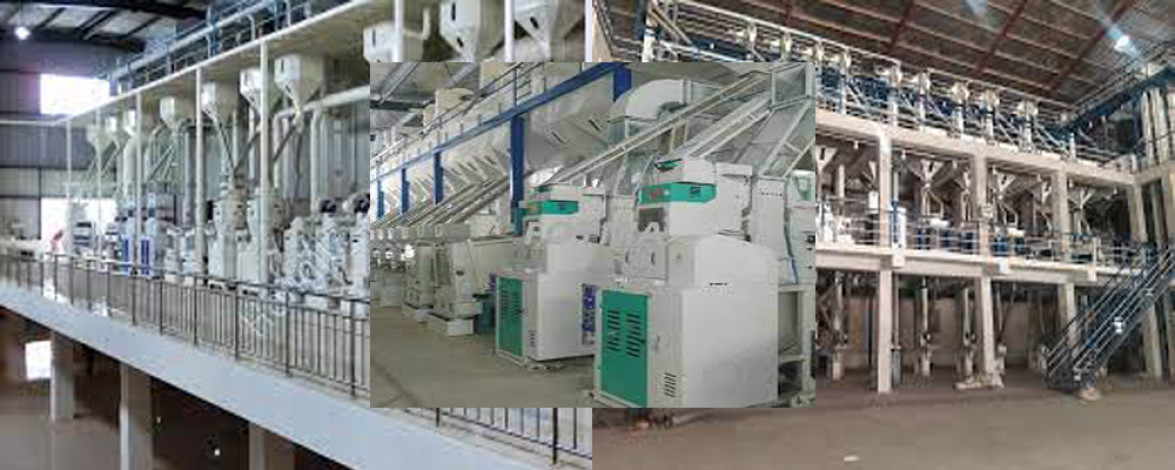
File Photo
In order to reduce the probability of broken rice and constantly improve the efficiency of comprehensive agriculture, we need to use rice milling machines for processing. The rice milling machine has a relatively high rice output rate and does not contain any impurities, which has been widely used. When we are rolling rice, we need to remove the surface of the rice, so that the processing effect will be better. Due to the poor thermal conductivity of rice grains and the slow transfer of the surface temperature of rice grains to the inside, a temperature gradient (temperature difference) will be formed from the outside to the inside. A large temperature difference will generate thermal stress inside the rice grains, and the thermal stress exceeding the inherent strength of rice will lead to a crack or waist burst of rice grains.
The structure of the traditional rice mill determines that the ventilation resistance of the white room of the rice mill is large and the air volume through it is small, which is difficult to restrain the rice temperature rise in the rice milling process and produce broken rice. It is an effective method to reduce broken rice by grinding rice at low temperatures and inhibiting the rise of rice temperature. This paper takes the 30 series rice mill which is compatible with the 100 t daily rice mill as an example and compares it with the new CFN30A low-temperature rising rice mill to analyze the winding mechanism of the low-temperature rising rice mill. Low-temperature rising of rice is controlled by the heat generated by grinding through the grain layer by the wind sprayed into the white grinding chamber. Therefore, the key technology of a low-temperature rice milling machine is to improve the air pressure and air volume of its own jet fan, reduce the wind resistance in the front section of the grinding room and improve the air volume of the grinding movement area per unit yield. The total pressure of the fan in series is the sum of the pressure of each fan. The built-in jet fan is used to provide jet air to the grinding room. On the one hand, it is conducive to the formation of air eddy in the grinding room, which makes the rice roll sharply and improves the grinding degree and the uniformity of the grinding. On the other hand, it reduces the total pressure of the external fan and reduces power consumption.
File Photo
Under the condition of a certain yield and grinding precision, the larger the volume of the grinding chamber, the larger the fluid air gap (the gap between rice grains). Because the air storage (distance between sand roll and rice screen) of the same type of rice machine is the same, the larger the movement area of the rice machine per unit output, the larger the air gap of rice fluid, the larger the air area of a rice grain, the lower the ventilation resistance, the more the air volume of rice fluid penetrating the grinding room and the more the heat generated by grinding and friction, and the more significantly the rise of rice temperature can be suppressed. In the early stage, the effect of air absorption of the rice machine is to remove the bran and suck away the bran powder outside the white grinding room. The wind does not pass through the white grinding room (commonly known as/wild wind 0), and the resistance is in the range of 600~800 Pa. Therefore, the air volume of air absorption of the rice machine is relatively low, generally in the range of 600~1 000 m3/h, resulting in a high temperature of rice and a high rate of broken rice.
In the 1970s, an air jet rice machine appeared, which used part of the wind-absorbing bran to pass through the white grinding room. However, due to the structural design of the rice machine, the wind resistance through the white grinding room was high, and the air volume through the white grinding room was small. Although the use of jet air can improve the uniformity of white grinding, the reduction of rice temperature and breaking rate is not obvious. In order to reduce the broken rice, / the multi-machine light grinding 0 processes appeared, by reducing the accuracy of a single rice machine to reduce the internal pressure, reduce the rice temperature and the broken rice rate. The effect of cold rice polishing is better than that of hot rice polishing, whether it is the brightness or crushing index. The temperature rise is controlled below 10e by using low-temperature rising rice milling, adding cooling rice and classification process in front of the polishing machine and screening the broken rice less than 1/2 grain length, so that the rice temperature is close to room temperature, which can not only improve the brightness of white rice after polishing but also reduce the crushing of the polishing machine by more than 2%. The low-temperature lifting rice milling process, which consists of low-temperature lifting rice milling unit, cooling rice grading and polishing, can reduce the broken rice in rice mills by more than 5%, which is of great significance to increase the economic and social benefits of rice processing enterprises.
Source:
Online/GFMM
Comment Now